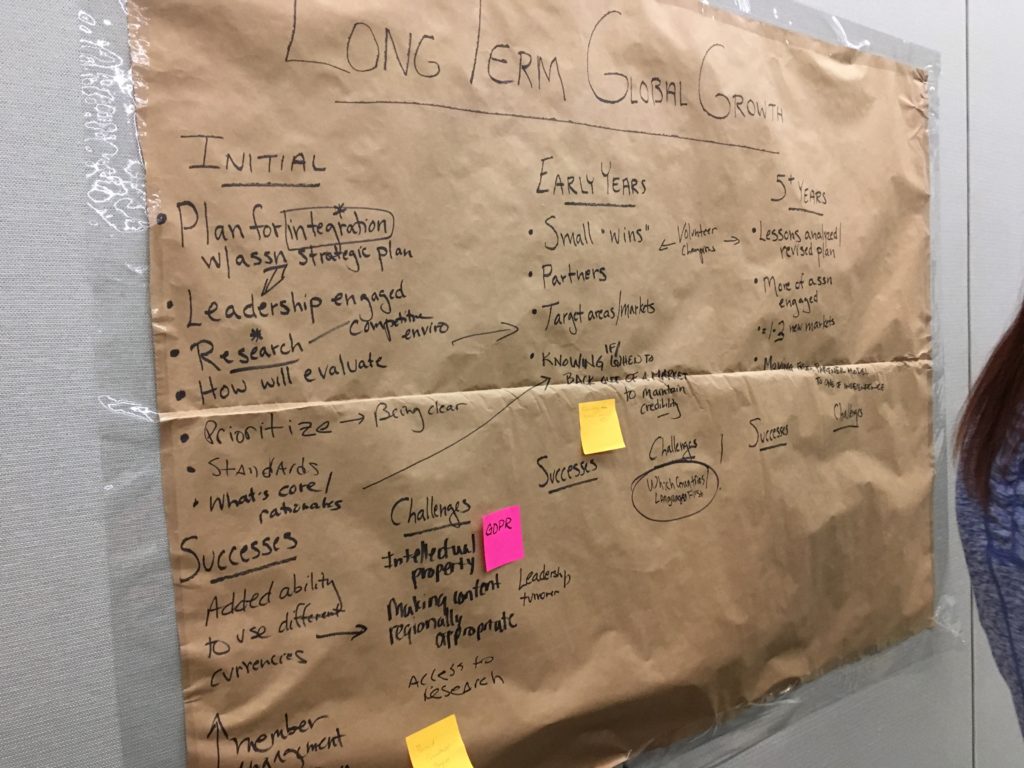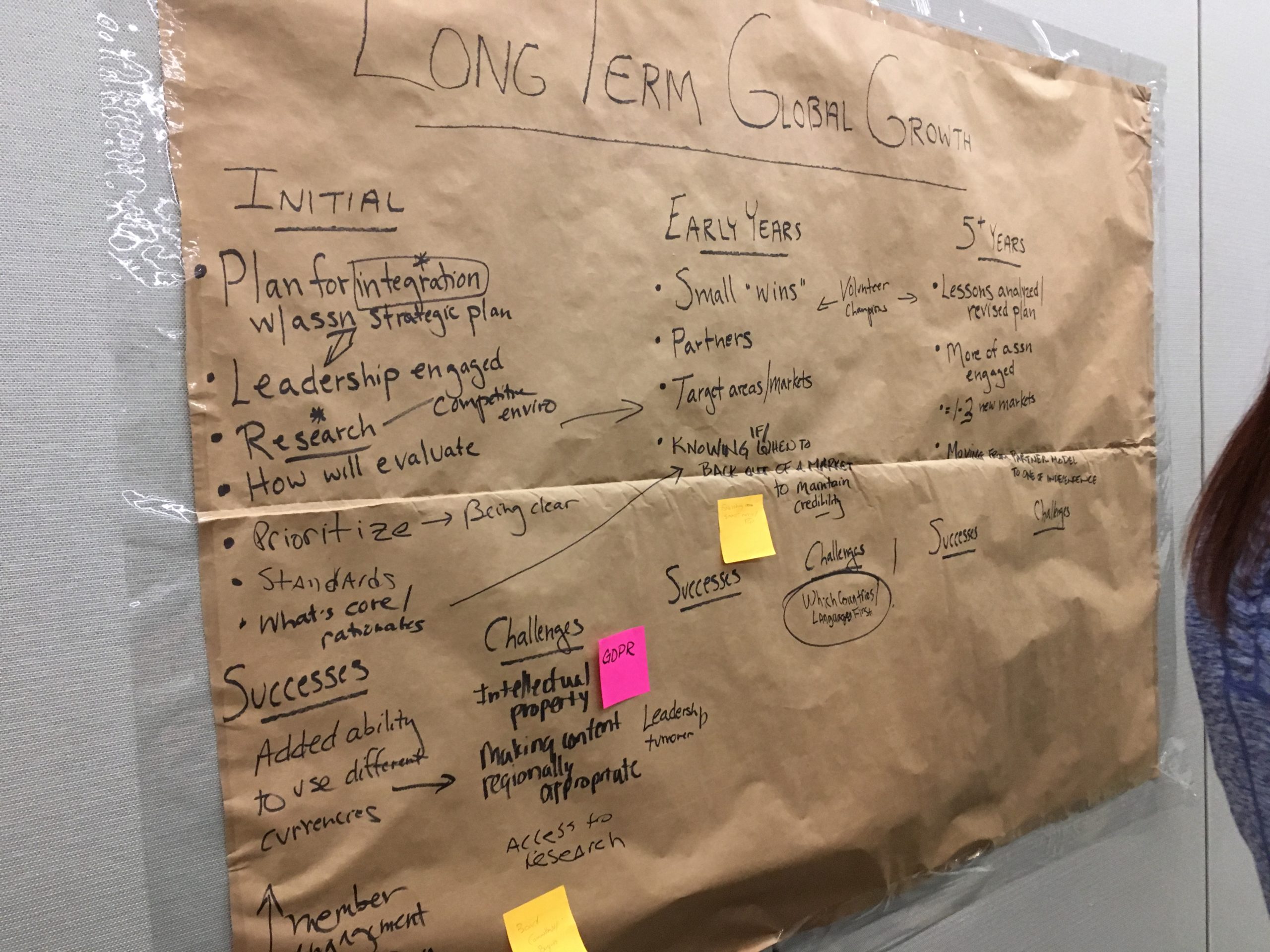
Having worked with numerous organizations on not only developing their goals and designing their plans, but actually implementing them over time, I’ve come to appreciate the value of learning the lessons about the long term nature of change. In a society that increasingly focuses on quick solutions it can be hard to find long-term case studies or forums to share the ups and downs of working on long term initiatives. As part of an effort to place attention on some of these important lessons, I organized a workshop with colleagues to discuss our shared experiences around global engagement. (The focus here was on global programs, but some of the lessons would be similar to sustaining other organizational change as well). The following includes experiences from my colleagues Alfons Westgeest, Wendy Simon and Robb Clawson as well as myself. Here is an outline of some of what we shared:
Vesting Senior Leadership
- Vesting the Board and senior leadership across the organization in the value of global engagement. – Having a successful and sustainable long-term program takes a lot of effort (and often resources) and calls for the commitment of senior leadership throughout the organization. If championing this work is left to just those with the portfolio, or a couple of leaders, it will be a continuous uphill battle to justify its value to the organization.
- Alignment of global goals with the organization’s strategic plan and operational plan – If your global focus is tied to your overall organizational plans, it will be easier for the leadership to be committed, and staff time and financial resources allocated. Make it clear how a global focus will positively affect the whole organization.
- Integrate into other cross-organizational communication channels – formal and informal – By using your existing communication channels, you send the message that global engagement is an organization wide priority, and you can get more people involved in the discussions.
- Small ‘wins’ that can help keep the commitment until greater value can be shown – Significant value added can often be longer-term and so it is important to have some success along that journey to point to and help keep the effort going. You can target these for shorter time frames such as six months or an annual review (and celebration of what has been successful).
Identifying and Nurturing Partnerships
- Be clear about your vision and goals – You may want to bring others in to help you build your vision because ‘you don’t know what you don’t know’ but be careful of losing your focus – you can’t be everything to everyone. Taking on too much at once can lead to being ineffective and it will take more time to recover and make progress.
- Know the value you bring to a partnership – Be honest about your weaknesses and be prepared to share with others. However, be clear on what you bring to the endeavor; don’t underestimate your organization’s own value.
- Spend time finding the right partner and establish clear goals – Know from what sectors you need to identify partners – governmental organizations? NGOs? private sector?
- Talk to everyone – people they have worked with, leadership, staff, volunteers, etc. to get a full picture of the entity. Understand why they want to be involved. If goals are aligned, begin small. Try one aspect of the endeavor and see how well you work together. If it goes well and you want to do more together, consider a contract or MOU that clearly outlines the roles/responsibilities.
- Communication is Key – Personal relationships determine success. In global relationships, language and culture can impact relationship building. We are all likely to embarrass ourselves at some point, but if you are transparent, showing respect and showing humility, it will help to build trust. Learn from your mistakes.
- Don’t make assumptions – Agree to frequent engagement & clear communication methodologies. Don’t assume you understand your partner’s position and don’t assume your partner understands yours. Organizational cultures can be different. Be clear in your values, motivations and expectations. Align different interests if possible, or be prepared to walk away if they are not compatible.
Evaluation
- Build the evaluation process before starting out – this will allow you to know what to track and understand the progress you are seeing. Allow ways to track both overall organizational goals and data, as well as making more localized assessments. Include both quantitative and qualitative measures (eg satisfaction, or dissatisfaction, can be an important indicator).
- Be mindful of the long-term horizon while holding ongoing & short term evaluations – even while celebrating short term successes (see above), you will want to have everyone remember that this is a long term journey.
- Agree to the criteria, and set goals that are clear and measurable in key areas – be realistic, including ways to incorporate new input and ideas that will come in, changes in leadership and focus, and anticipated risks and possibilities of setbacks.
- Learn from your evaluations – Analyze your progress and be willing to make adjustments. For example, you may need to change partners or partner arrangements.
